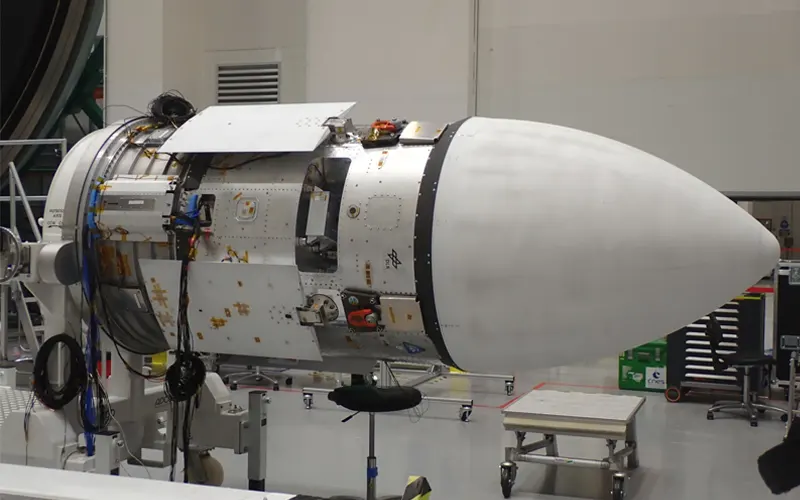
The German aerospace agency DLR has announced that it has completed the qualification campaign for the Callisto reusable rocket demonstrator’s “Top Block.” This section of the rocket houses several key systems, including avionics, telemetry, communications, and flight control systems, the latter of which includes four deployable control surfaces and a reaction control system that uses H2O2 propellant.
Begun in 2015 as a trilateral initiative between DLR, the French space agency CNES, and the Japanese space agency JAXA, Callisto aims to mature key technologies to enable the recovery and reuse of rocket boosters.
The Callisto demonstrator will stand 13.5 metres tall, measure 1.1 metres in diameter, and have a lift-off mass of around 4 tonnes. It will be made up of five main sections: the Aft Bay, which houses the propulsion system and landing legs, the LH2 tank, the LOx tank, the Versatile Equipment Bay (VEB), and, at the very top, the fairing.
In February 2025, the DLR Institute of Space Systems revealed that the Callisto Vehicle Equipment Bay (VEB) had been shipped from the institute’s facility in Bremen to CNES testing facilities in Toulouse. On its way to Toulouse, the transport truck stopped at the DLR Institute of Structures and Design in Stuttgart to collect Callisto’s fairing. Combined, the VEB and the fairing make up the rocket’s “Top Block,” which accounts for approximately one quarter of the demonstrator’s total height.
In a 29 April update, the DLR Institute of Structures and Design announced that it had completed key testing for the qualification of the Callisto “Top Block.” This campaign included mechanical tests designed to ensure this key element of the demonstrator will be able to withstand the rigors of each of the ten test flights.
With this key element of the demonstrator now nearly qualified, Callisto is approaching the climax of its decade-long development. Initial test flights are expected to begin from the Guiana Space Centre in 2026, with up to ten flights planned over a six-month period.





I had never heard of this Callisto reusable rocket before, even though I follow developments in space technology closely. Perhaps that is because this program seems to be progressing very slowly, especially since after a decade of development there is still no integrated demonstrator.
It also frustrates me somewhat that in 2025 governments still think it is their job to develop and finance such technology themselves. In the United States NASA has left such tasks entirely to the private sector. With all the emerging space companies in Europe, that would be the right choice here too.